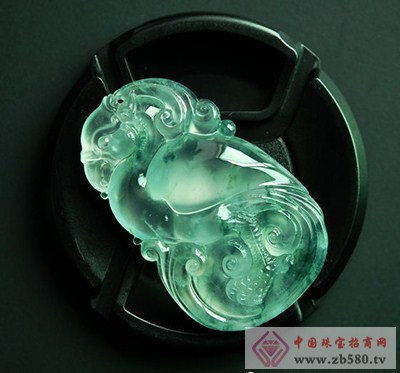The influence of cracks, lines and cotton on jade

As the saying goes, "No grain is not jade", there are often asbestos, cracks and stone patterns inside the jade. People often say that the jade cracks, in fact, the jade cracks and stone patterns are different.
Cracking means that the jadeite is destroyed by external forces, causing the structure of the jade to be destroyed and the cracks generated inside the jadeite.
The crack of the jade will prevent the transmission of light. In the jade industry, people use the flashlight to transmit the light to illuminate the jade. See if there is any light inside the jade to prevent the presence of cracks inside the jade. If it is a jade product, the crack If you show it on the surface of the emerald, you can use your nails to move around the cracks, and you will notice the feeling of resting your hands, that is, there are concave gaps.
The jadeite pattern refers to the cracks that have already healed inside the jadeite or the lines that appear during the growth of jadeite. The stone streaks and cracks of jadeite are different. The stone streak of jadeite does not destroy the internal structure of jadeite, so it does not prevent the transmission of light. The fissure of the jade is a very serious sputum. Therefore, if there are too many cracks in the jade, it will not be considered as a jade bracelet, because the internal cracks in the jade will seriously affect the price of the jade bracelet.
What is jade cotton? Emerald cotton is a group-like or silky white inclusion that can often be seen in a good jadeite. It looks like cotton, so people call this kind of lumps or silky white inside the jade. For "cotton", the jadeite cotton is part of the jadeite. Many jadeites have cotton inside. In the ice jadeite, you can see the white cotton with agglomerate or silky floc.
The jadeite white cotton is made up of some semi-transparent or slightly transparent white minerals. It is said that most of the jadeite cotton is caused by the intergranular gaps, fissures and impurity inclusions of jadeite in jadeite, which is also called "reflection". "The intergranular optical effect", it is also said that the mineral particles that make up asbestos are coarser than the other mineral crystal particles in the surrounding, and the mineral particles that make up the asbestos are not densely bonded, resulting in the opaqueness of the jadeite asbestos.
Both stone and white cotton are jade inside the jade, but they have different degrees of influence on the quality of the jade. Therefore, it is very important to separate the jade cracks, stone patterns and white cotton in the jade trading or evaluation. The cracks, stone patterns and white cotton inside the jade are well distinguished.
First of all, the emerald crack, we can use the flashlight to transmit light to the jade crack will block the transmission of light, if exposed on the emerald surface, we can also use fingernails to swipe on the crack, there will be a feeling of resting.
Secondly, the stone pattern of the jade, the stone pattern looks like a crack, but the stone pattern does not block the transmission of transmitted light, and there is no feeling of resting on the surface with the nail.
Finally, jadeite asbestos is easily distinguished. The jadeite of jadeite is mainly white clusters and filaments distributed inside the jadeite. The appearance of jadeite cotton is significantly different from that of jade.
Color Glaze Mugs,Ceramic Dinner Set,Tea Cup Porcelain,Reactive Glaze Ceramic
HANDAN OURAY I/E CO., LTD , https://www.ourayceramicware.com